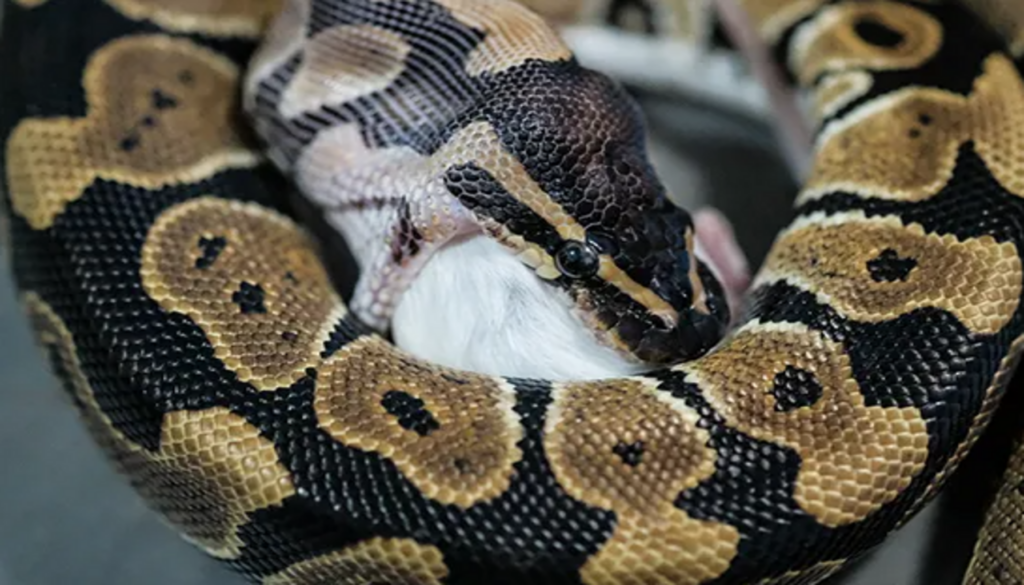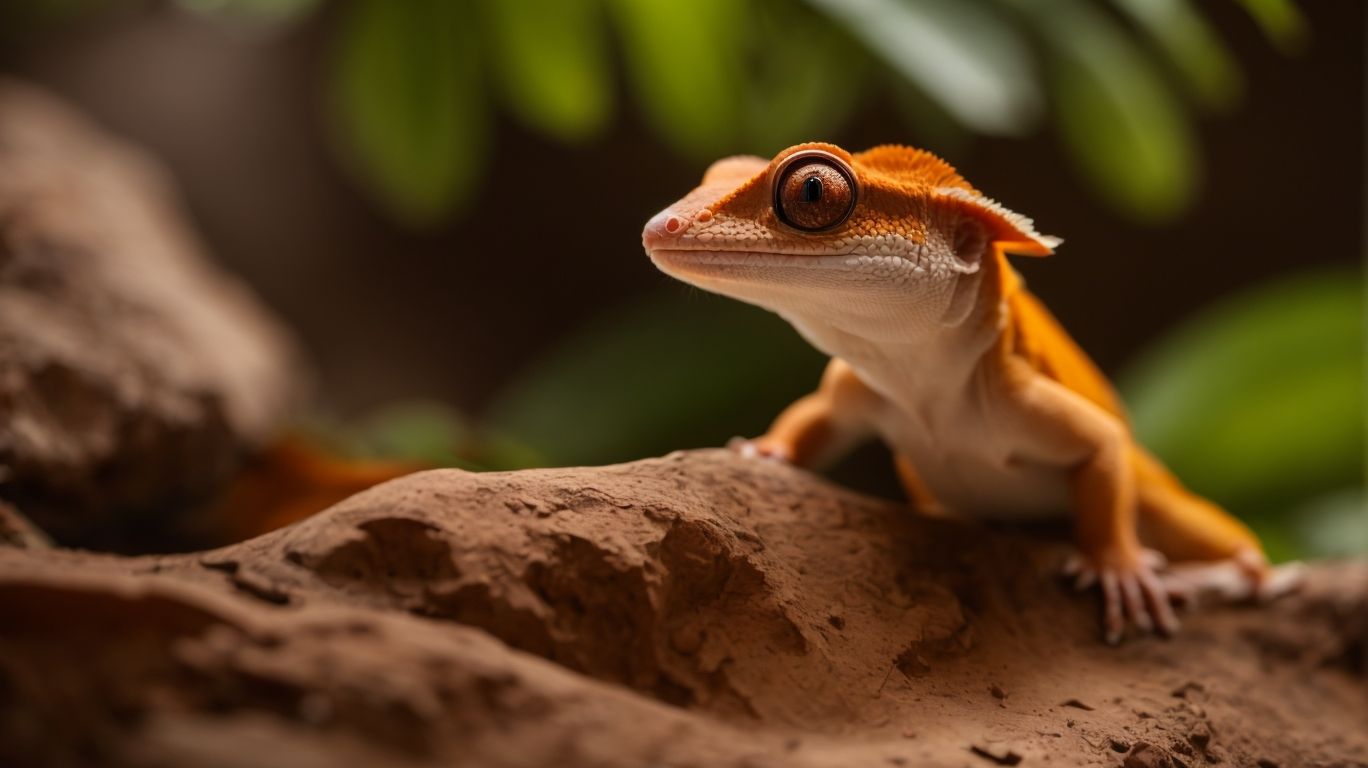
Keep Your Ball Python Well-Fed and Healthy: Feeding and Nutrition Dos and Don’ts
Table of Contents
Correct Feeding Frequency
Feeding your ball python a proper diet is crucial for their overall health and well-being. As a responsible pet owner, it’s essential to understand what types of food are suitable for your snake. Ball pythons are carnivores, meaning they primarily eat meat. In the wild, their diet consists mainly of small mammals like mice and rats.
One of the most important aspects of feeding and nutrition for your ball python is getting the feeding frequency just right. It’s essential to establish a consistent feeding schedule to ensure your snake is getting the nutrients it needs without overfeeding or underfeeding. So, how often should you be feeding your ball python?
Generally, adult ball pythons should be fed every 7-10 days, while younger snakes may require more frequent feedings. This feeding frequency allows your snake’s digestive system to fully process the meal before offering another one. It’s important not to feed your ball python too often, as this can lead to obesity and other health issues. On the other hand, waiting too long between meals can result in malnutrition.
To determine the best feeding frequency for your ball python, consider factors such as age, size, and metabolism. If your snake is maintaining a healthy weight and overall condition, you’re likely on the right track. However, if you’re unsure about the appropriate feeding frequency for your snake, it’s always best to consult with a reptile veterinarian.
Remember, consistency is key when it comes to feeding frequency. Establish a schedule and stick to it to ensure your ball python is receiving the proper nutrition and staying healthy. By getting the feeding frequency right, you’ll be providing the best care for your scaly friend.
Ensure Proper Size of Prey
Feeding your ball python the proper size of prey is crucial for their overall health and well-being. Just like in the wild, where they consume small mammals like mice and rats, it’s essential to replicate their natural diet in captivity.
Choosing prey that is the right size is vital. The size of the prey should be similar to the diameter of your snake’s body. Offering prey that is too large can lead to digestive issues and regurgitation, while prey that is too small may not provide enough nutrients.
To determine the appropriate size of prey, consider your ball python’s age and size. Younger snakes will require smaller prey, while adult pythons can handle larger meals. It’s always better to err on the side of caution and offer prey that is slightly smaller rather than larger. This ensures your snake can consume the meal comfortably without any issues.
If you’re unsure about the right size of prey for your ball python, consult with a reptile veterinarian. They can assess your snake’s size and give you guidance on the appropriate prey size. Remember, it’s essential to provide your snake with the proper size of prey to ensure they are getting the nutrients they need to stay healthy and thrive.
Don't Force Feed Your Ball Python
Feeding your ball python should never be a forceful or stressful experience. It’s important to understand that ball pythons may go off their food from time to time, and this is completely normal. Just like humans, they have their own preferences and may not always feel hungry.
If your ball python is refusing to eat, it’s crucial not to force feed them. Forcing food into their mouth can cause unnecessary stress and harm to your snake. Additionally, if a ball python is not eating, it could be a sign of an underlying health issue. Instead of force feeding, it’s best to monitor their behavior and consult with a reptile veterinarian if you have concerns.
Remember, ball pythons are not like other pets that need to be force-fed. They have their own natural instincts and may refuse food for various reasons. Trust your snake’s instincts and provide them with a comfortable and stress-free environment. As long as they are maintaining a healthy weight and overall condition, there’s usually no need to worry.
Avoid Feeding in the Snake's Regular Enclosure
When it comes to feeding your ball python, it’s important to avoid feeding them in their regular enclosure. This is because feeding them in the same space where they live can lead to stress and anxiety, which can negatively impact their feeding habits and overall well-being.
Feeding your ball python in a separate enclosure or feeding container is ideal. This allows them to associate their regular enclosure with relaxation and safety, rather than associating it with food. It also helps to minimize the risk of them ingesting substrate or other debris while eating.
Creating a designated feeding space for your ball python is relatively easy. All you need is a separate enclosure or a secure feeding container that is easy to clean and disinfect. Make sure the container is appropriately sized for your snake, with enough space for them to comfortably consume their meal.
When it’s time to feed your ball python, transfer them to the feeding container and offer their meal. After they have finished eating, you can safely transfer them back to their regular enclosure. Remember to always wash your hands before and after handling your snake to prevent the spread of bacteria.
By avoiding feeding your ball python in their regular enclosure, you are creating a positive association with their living space and reducing stress during meal times. This can greatly contribute to their overall well-being and make feeding them a much more pleasant experience for both you and your scaly friend.
Optimal Hydration Practices for Ball Python
Proper hydration is essential for the health and well-being of your ball python. Just like any living creature, snakes need water to survive and thrive. However, unlike mammals, they do not drink water in the same way. Ball pythons obtain their hydration through a process called “soaking”.
Soaking is when your snake submerges itself in water to absorb moisture through its skin. Providing a shallow water dish in your snake’s enclosure is crucial to ensure they have access to water at all times. The dish should be large enough for your snake to fully submerge themselves in comfortably. It’s important to regularly clean and refill the water dish to prevent bacteria growth and ensure the water is fresh.
Additionally, humidity levels in the snake’s enclosure play a significant role in their hydration. Ball pythons require a humidity level of around 50-60% to maintain proper hydration. This can be achieved by misting the enclosure with water or using a reptile-specific humidifier. Monitoring and maintaining humidity levels is crucial to prevent dehydration and shedding issues.
It’s also essential to provide your ball python with regular opportunities for soaking. You can do this by providing a separate soak container filled with warm water. This allows your snake to fully submerge themselves and hydrate their skin. Soaking can also help with shedding, as it helps to loosen the old skin.
By ensuring your ball python has access to fresh water, maintaining proper humidity levels, and providing opportunities for soaking, you can help keep your snake properly hydrated. Remember, hydration is key to their overall health and well-being.
Monitor Your Ball Python's Weight
Monitoring your ball python’s weight is an important aspect of their overall health and well-being. Just like humans, snakes can be prone to weight fluctuations, which can indicate underlying health issues or improper feeding habits. By keeping an eye on your snake’s weight, you can ensure they are maintaining a healthy size and body condition.
To monitor your ball python’s weight, it’s essential to have a regular weighing routine. You can use a digital scale specifically designed for weighing small animals. It’s best to weigh your snake about once a month, as frequent weighing can cause unnecessary stress.
When weighing your ball python, make sure to handle them gently and support their body properly. Place them on the scale and wait for the weight to stabilize before recording it. Keep track of their weight over time and look for any significant changes or fluctuations.
If you notice that your ball python is gaining or losing weight rapidly, it’s important to consult with a reptile veterinarian. Rapid weight gain could indicate overfeeding or obesity, while rapid weight loss could be a sign of an underlying health issue or malnutrition.
A reptile veterinarian can assess your snake’s weight, body condition, and overall health. They can provide you with guidance on appropriate feeding amounts, diet adjustments, and any necessary medical treatment. Regular check-ups with a veterinarian who specializes in reptiles are essential for ensuring your ball python’s weight and health are well-monitored.
Remember, monitoring your ball python’s weight is an important part of responsible pet ownership. By staying vigilant and seeking professional guidance when needed, you can ensure that your snake remains happy and healthy for years to come.
Common Feeding Challenges of Ball Python
Feeding your ball python may seem straightforward, but there are some common challenges that pet owners often face. One of these challenges is refusal to eat. Sometimes, ball pythons may go off their food for various reasons, such as stress, environmental changes, or shedding. This can be concerning for owners who want to ensure their snake is getting the proper nutrition.
Another feeding challenge is regurgitation. If you offer your ball python prey that is too large or if the temperature of the enclosure is too low, it can lead to regurgitation. This is when the snake vomits up its meal, which can be harmful to their digestive system.
Additionally, some ball pythons may be picky eaters and prefer certain types of prey. It’s not uncommon for a snake to refuse a meal because it’s not their preferred choice. This can be frustrating for owners who are trying to provide a balanced diet.
Lastly, some ball pythons may become obese if overfed. This can lead to a range of health issues, including heart problems and reduced lifespan. It’s important to monitor your snake’s weight and adjust their feeding habits accordingly.
These are just a few common feeding challenges that ball python owners may encounter. It’s important to stay patient, observant, and seek advice from a reptile veterinarian if you have any concerns. With proper care and attention, you can overcome these challenges and ensure that your ball python stays healthy and well-fed.
Related Posts

Incubating Crested Gecko Eggs: Essential Techniques and Tips
Crested geckos are fascinating reptiles that are known for their…

Red Crested Gecko Health: Common Issues and Preventive Care
Are you a proud owner of a red crested gecko?…

Creating the Ideal Environment for Your Red Crested Gecko
Do you own a red crested gecko or are you…

No Comments